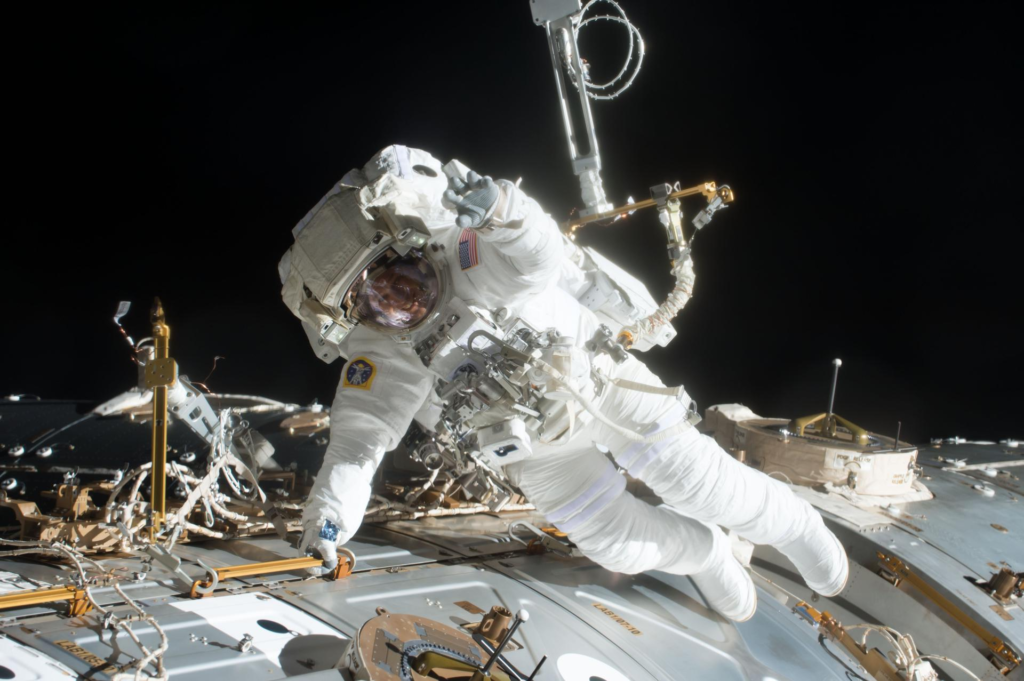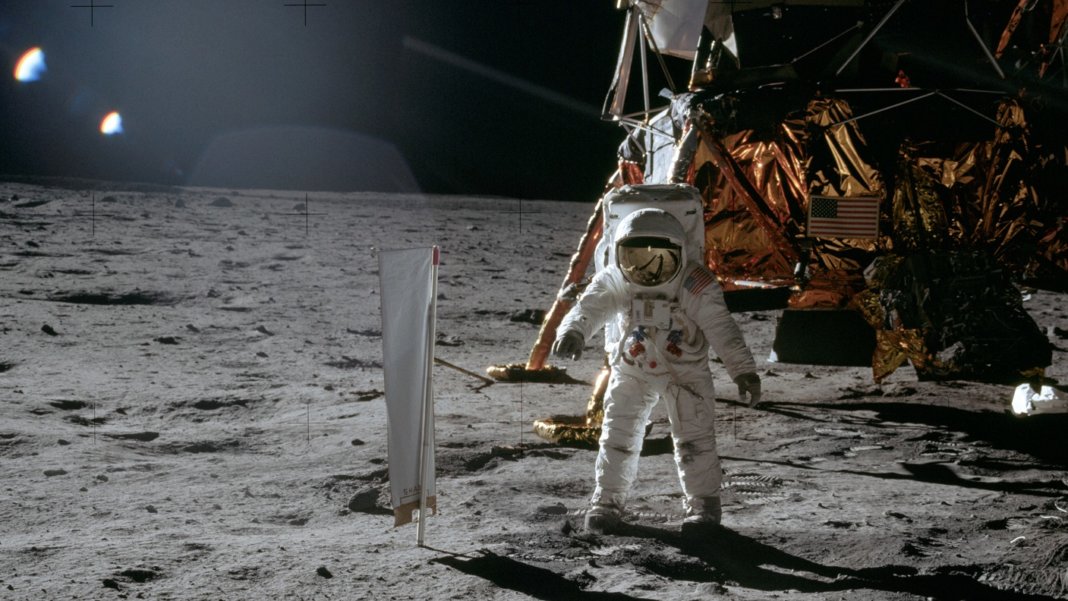
NASA Just Chose Two Companies To Build Future Spacesuits
For many years now agencies such as NASA have been sending humans into space. Beyond this, astronauts have been capable of exiting spacecraft whether it be on the Moon, outside the International Space Station, and more. All of these missions have spacesuits to thank for the opportunity. This being said, a spacesuit is not only an integral piece of equipment but also a very complex system.
NASA knows this and is also working to prepare for future missions to the Moon, and a continued presence in space. With this need, the agency just announced they had picked both Axiom Space and Collins Aerospace to develop the next generation of spacesuits. This is a very big deal as the agency continues to work with the commercial industry for different vital components of space.
With this opportunity, Axiom Space and Collins Aerospace both have a big job ahead of them. While this is the case, they also have an incredible opportunity to be an important part of the future of space exploration, returning humans to the Moon, and more. Here I will go more in-depth into the recent announcement, who the companies are, and what to expect in the future.
Recent Announcement

Over the past few days, we have received a lot of new information on the future of accessing space, and who will be responsible for creating the spacesuits of the future. Yesterday, NASA tweeted saying, “Congratulations to Axiom Space and Collins Aerospace for being selected to move forward with their spacesuit design, which will unlock new capabilities for missions to the @Space_Station, @NASAArtemis missions to the Moon, and eventually missions to Mars.” Specifically, NASA has selected Axiom Space and Collins Aerospace to advance spacewalking capabilities in low-Earth orbit and at the Moon, by buying services that provide astronauts with next generation spacesuit and spacewalk systems to work outside the International Space Station, explore the lunar surface on Artemis missions, and prepare for human missions to Mars.
The awards are said to leverage NASA expertise with commercial innovation to support continued science at the orbiting laboratory and long-term human exploration at the Moon under Artemis. “With these awards, NASA and our partners will develop advanced, reliable spacesuits that allow humans to explore the cosmos unlike ever before,” said Vanessa Wyche, director of NASA’s Johnson Space Center in Houston. “By partnering with industry, we are efficiently advancing the necessary technology to keep Americans on a path of successful discovery on the International Space Station and as we set our sights on exploring the lunar surface.” The companies selected were chosen from the Exploration Extravehicular Activity Services (xEVAS) contract solicitation. The contract enables selected vendors to compete for task orders for missions that will provide a full suite of capabilities for NASA’s spacewalking needs during the period of performance through 2034. The indefinite delivery and indefinite quantity, milestone-based xEVAS contract has a combined maximum potential value of $3.5 billion for all task order awards. As you can imagine, this is a substantial about of money that both Axiom and Collins Aerospace could receive for this project. The first task orders to be competed under the contract will include the development and services for the first demonstration outside the space station in low-Earth orbit and for the Artemis III lunar landing. Each partner has invested a significant amount of its own money into development. Partners will own the spacesuits and are encouraged to explore other non-NASA commercial applications for data and technologies they co-develop with NASA. This new approach to spacewalk services encourages an emerging commercial market for a range of customers, and grants NASA the right to use the same data and technologies within the agency and on future exploration program procurements.
With the Artemis missions getting close, and current suits such as the ones used on the ISS getting much older, it’s clear NASA is ready for the next best thing. In this case, working with the commercial industry should help speed up this process and provide high-quality products. NASA experts defined the technical and safety standards by which the spacesuits will be built, and the chosen companies agreed to meet these key agency requirements. The commercial partners will be responsible for design, development, qualification, certification, and production of spacesuits and support equipment to enable space station and Artemis missions. “Our commercial partnerships will help realize our human exploration goals,” said Mark Kirasich, deputy associate administrator of NASA’s Artemis Campaign Development Division. “We look forward to using these services for NASA’s continued presence in low-Earth orbit and our upcoming achievement of returning American astronauts to the Moon’s surface. We are confident our collaboration with industry and leveraging NASA’s expertise gained through over 60 years of space exploration will enable us to achieve these goals together.”
Lastly, the agency will continue to make flight, and ground-based test data from NASA-led space station spacewalks and NASA’s Exploration Extravehicular Mobility Unit (xEMU) development project available to companies through the EVA Technical Library. This will encourage an accelerated transition to industry while reducing risks and providing access to previous NASA investments in advanced exploration spacesuit development. NASA designed the contract to endure and evolve with needs of the agency and space industry. The contract also provides the agency with an optional mechanism to add additional vendors that were not selected in the original award announcement as the commercial space services market evolves. The xEVAS contract is managed by the EVA & Human Surface Mobility Program at NASA Johnson. The agency finished by pointing out that its goal is to provide safe, reliable, and effective capabilities that allow astronauts to survive and work outside the confines of a spacecraft to maintain space station and explore the areas on and around the Moon.
Axiom & Collins Aerospace

Now that we know more about the recent announcement and what this means for the future of accessing space, we can take a closer look at the two companies picked. Collins Aerospace is by no means new to creating Spacesuits and working with NASA. This company developed and worked on the current EMU spacesuit that we see very often during a NASA spacewalk and more. Collins Aerospace, a unit of Raytheon Technologies Corp, is a leader in technologically advanced and intelligent solutions for the global aerospace and defense industry. Created in 2018 by bringing together UTC Aerospace Systems and Rockwell Collins, Collins Aerospace has the capabilities, comprehensive portfolio and expertise to solve customers’ toughest challenges and to meet the demands of a rapidly evolving global market.
Founded as a radio company in Cedar Rapids, Iowa, in 1933, Rockwell Collins left its mark on history, from establishing communications with Rear Admiral Richard Byrd at the South Pole to helping forge today’s global positioning system. The company has become a leader in aviation and high integrity solutions, built on a legacy of quality, trust, and customer service. UTC Aerospace Systems was formed in Charlotte, North Carolina, in 2012 when United Technologies Corporation (UTC) acquired Goodrich and combined it with the company’s existing Hamilton Sundstrand division. From the propeller that powered Amelia Earhart’s nonstop flight across the Atlantic to generations of space suits for U.S. astronauts, the company redefined the industry with cutting-edge solutions. As Collins Aerospace, the combined talents of both organizations are committed to honoring their strong legacy while creating comprehensive strategies to propel its customers and the industry toward the future, every day.
We then have Axiom Space, who is best known for the recent Ax-1 mission and plans to build a commercial space station. Axiom highlights they are making the possibilities of Low Earth Orbit accessible to visionary governments, researchers, manufacturers, and individuals. Because they believe microgravity is the most promising environment for innovation and problem-solving since the Internet. In 2022, Axjiom successfully completed the first private mission to the International Space Station and they are currently building the first commercial space station, set to launch Hub 1 in 2024; ensuring a brighter future for everyone on Earth and setting our course for life beyond it. The leadership team includes world-class, specialized expertise in commercial utilization of microgravity, on-orbit operations, astronaut training, space medicine, space system architecture/design/development, engineering, marketing, and law. A spacesuit is something unique however the company is capable of great things.
Conclusion
With Artemis making progress and the overall access to space increasing, NASA has a significant need for new and improved spacesuits. The agency just announced that Axiom Space and Collins Aerospace will work on the next generation of spacesuits. We will have to wait and see how it progresses and the impact it has on the space industry.
